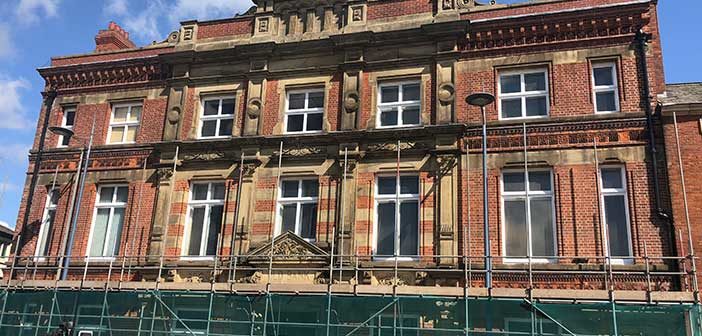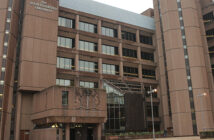A SECOND planning application has been submitted for the historic former Parr’s Bank building in Winwick Street, Warrington.
Hotel developer YP Group has submitted proposals for part of the ground floor to become a coffee shop and flexible events venue.
Proposals to use most of the Grade 2 Listed building as a 16-bedroom hotel were submitted last year and work has already started on site.
The original application was for part of the ground floor to be converted to create a reception area, guests’ lounge and lobby. The bedrooms would be on the first and second floors of the three-storey building.
It was made clear at the time that part of the ground floor space would be retained for an alternative future use which had yet to be determined.
Now the new application indicates that a coffee shop/bar and flexible events venue is envisaged.
The bank’s history dates back to the late 18th century, with a possible starting date of 1782. The first partnership was with Joseph Parr, a sugar boiler, his brother-in-law Matthew Lyon, and Walter Kerfoot, a solicitor. Partnership names changed and the firm was variously known as Parr & Co, and Parr, Lyon and locally as The Warrington Bank.
Parr’s remained essentially a local bank with offices in Warrington, Runcorn and St Helens until 1865 when it became a joint-stock bank under the name Parr’s Banking Company. Helped by a series of acquisitions, including the National Bank of Liverpool, Parr’s built up its presence in Cheshire, Lancashire and Staffordshire; by 1890 there were 22 branches and 21 sub-branches.
The Bank’s most important strategic move came in 1891 when it purchased the small London bank of Fuller, Banbury, Nix & Co. This gave Parr’s a seat on the London Clearing House and, in contrast to the nearby Bank of Liverpool it immediately moved the head office down to London. With Fuller giving the Bank an initial London presence, the substance was provided by the acquisition of the Alliance Bank in 1892. The Alliance had emerged from the financial reconstruction which had seen it lose its Liverpool and Manchester offices and now had 12 branches in London; in recognition of Alliance’s importance the name of the Bank was changed to Parr’s Banking Company and the Alliance Bank. Other smaller London banks were acquired and in 1896 it bought the Consolidated Bank, only slightly smaller than the Alliance, but this time a London bank with branches in Manchester. At that point, the name was returned to Parr’s Bank.
The 1890s also saw Parr’s embark on acquisitions in the midlands and the south west, important ones being Pare’s Leicestershire Banking in 1902 and Crompton and Evans’ Union Bank of Derby in 1914. However, its most prestigious acquisition was Stuckey’s Bank (1909) (the “Somersetshire Bank”) which “wielded great power in the west of England and had the largest note circulation of any bank in England outside the Bank of England”.
By the outbreak of war in 1914 Parr’s had almost 400 branches and sub-branches. In 1918 Parr’s agreed to amalgamate with the London County and Westminster Bank. The chairman of Parr’s Bank made the case: “We gain access to a very large area in the Home Counties. They gain a first-class introduction to Lancashire and to such leading towns in the Midlands as Leicester and Derby and a very valuable connection in the West of England.” The enlarged bank was renamed London County Westminster and Parr’s Bank.




